How to aerate a lawn, with expert tips from Monty Don
Find out how to aerate a lawn in 5 simple steps and give yours the care it needs to stay lush and healthy
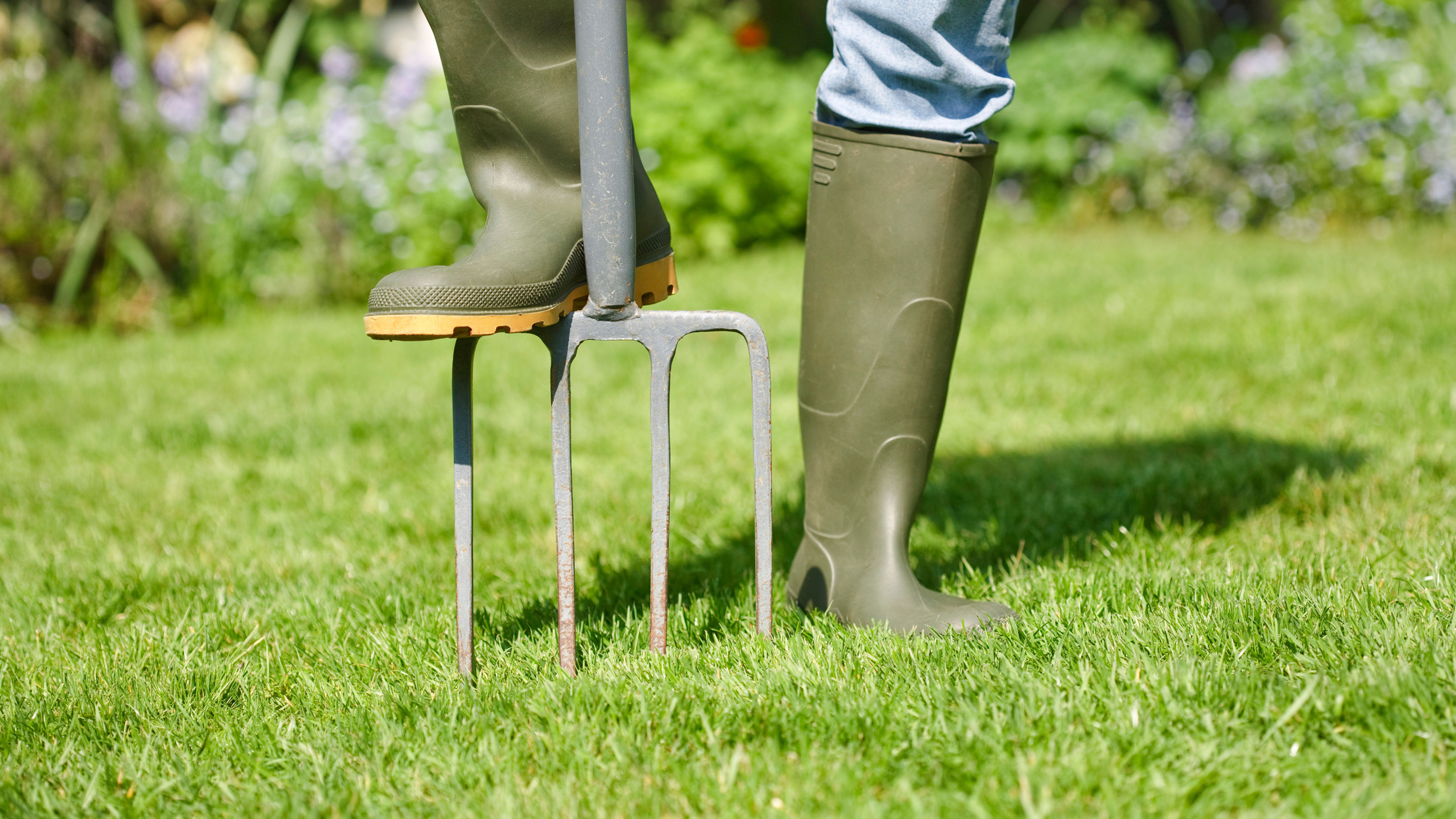

Knowing how to aerate a lawn is vital to keeping your grass thick and healthy. Just like the other plants in our backyards, grass needs air and water as well as nutrients to stay at its best, and aerating the lawn helps these elements to reach its roots.
It‘s worth inspecting the lawn in the autumn/fall to check its state of health. That way you can give it some help while the grass is still growing.
Combining some simple lawn maintenance with the right lawn edging ideas will ensure your lawn looks its best year round. In our step-by-step guide we’ve also included tips on how to aerate the lawn from gardening expert, writer and broadcaster Monty Don to bring you success, too.
How to aerate a lawn: a step-by-step guide
Being aware of how to aerate a lawn is essential for grass that’s green and healthy, whether yours is a space for the family to enjoy or a more formal feature of the yard. If it’s well aerated, a lawn can cope better when there’s drought or it’s waterlogged, plus it will make it even easier for the best lawn mower to keep it in shape during spring and summer.
As for the timing, generally it’s a job you should consider doing in September. Aerating the lawn in early fall means it can respond to your efforts. You shouldn’t aerate when the grass is dormant.
Note, however, that for warm season grasses in the southern states of the US, it’s best to aerate in late spring/early summer, so add it to your list of spring lawn care tasks in these regions.
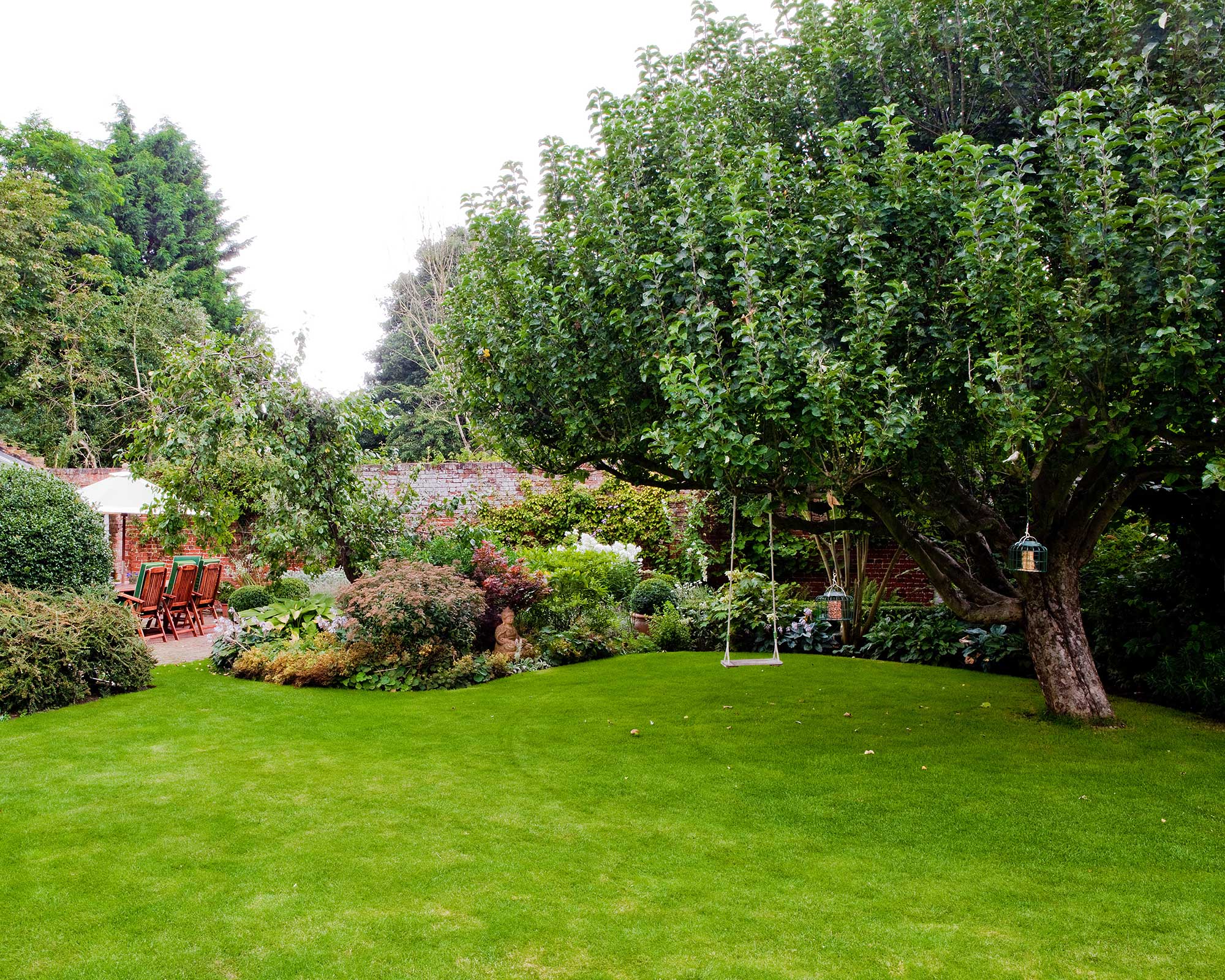
Step 1: Inspect the lawn
Just as with how to mow a lawn correctly, there are certain things you'll need to do when aerating the lawn to get the best results.
Aerating involves spiking the lawn so air and water can better reach the roots of the grass. It’s particularly important to concentrate on the areas of it that receive the most wear – often because of kids’ activities and pets’ movement over it – and that are compacted.
Therefore, before you begin, check the lawn to see what kind of a state it’s in after the summer. You’ll be able to spot where the grass is sparse or stunted. Meanwhile, compaction might be indicated if you see puddles of rain water rather than it being absorbed. But you can also test by pushing a screwdriver into the lawn. If it’s hard to push past 2 or 3 inches of depth, but then it becomes easier, there is likely a compacted layer.

Step 2: Get the right tools
Before discovering how to aerate a lawn, it’s important to equip yourself with the right tools.
A fork may be sufficient, but you may need a slicing aerator with rotating blades, or a core or plug aerator with hollow tines that take out plugs of soil.
On his website, gardening expert Monty Don recommends using a fork unless your lawn is a larger one. If that’s the case, Monty suggests hiring a rolling hollow-tine, or a slitter. You will also need a stiff brush and some sand.
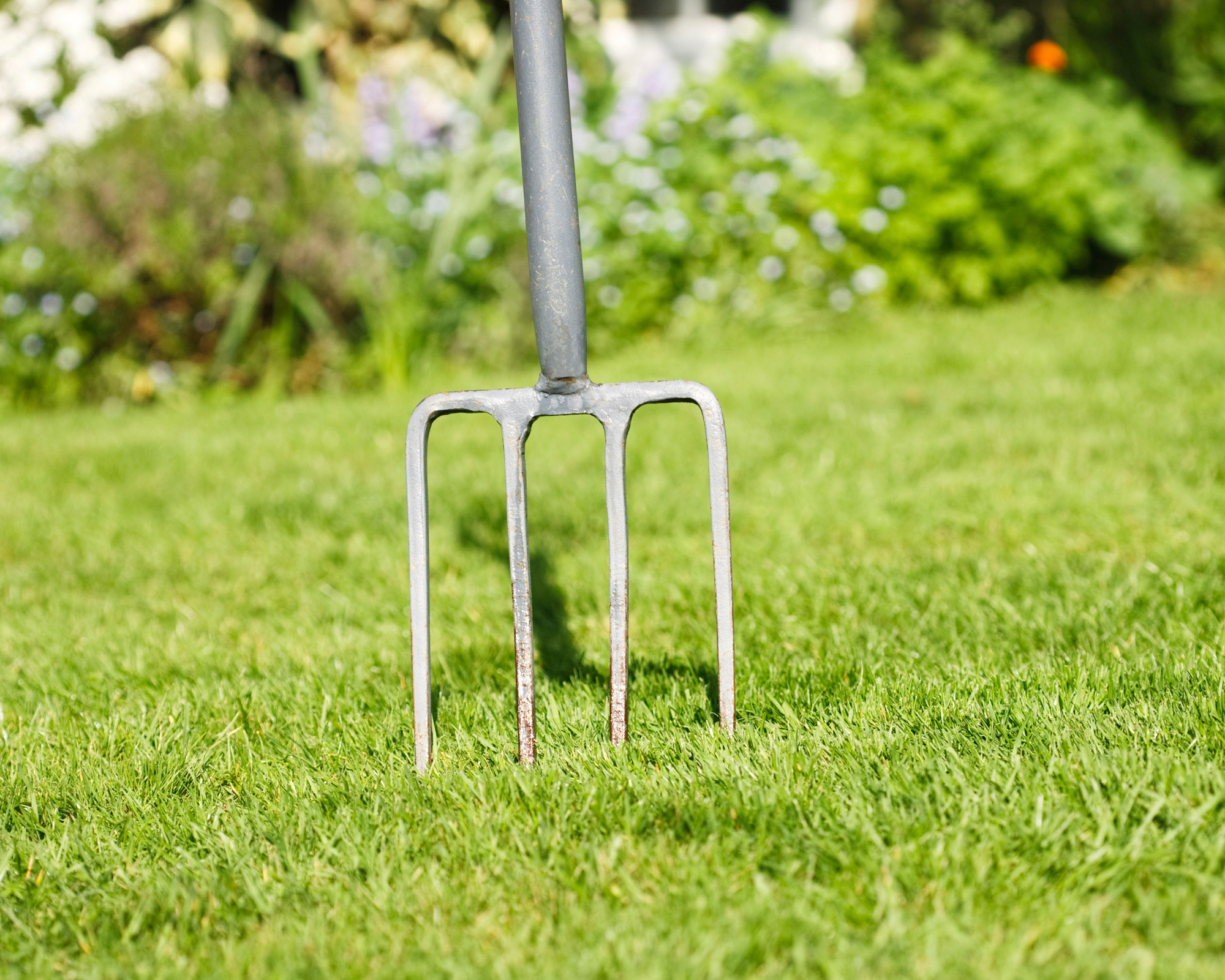
Step 3: Spike the lawn
Wondering how weather conditions affect the process of how to aerate a lawn? Ideally, you should aerate your lawn when the grass is moist, the day after rainfall or irrigation, as it’s a job that’s harder to do when the soil is very dry. However, you don’t want the lawn to be very wet either.
Using your chosen tool spike the lawn. Monty Don suggests working the tines of a fork into the ground at 12 inch (30cm) intervals.
If you are using an aerator machine, work across the lawn as you would when mowing; work in two different directions. Pay particular attention to where kids habitually play or garden furniture stands in summer. Aim to make multiple passes over the areas with the worst compaction.
Soil removed by a plug aerator can be left on the lawn where it will break down.
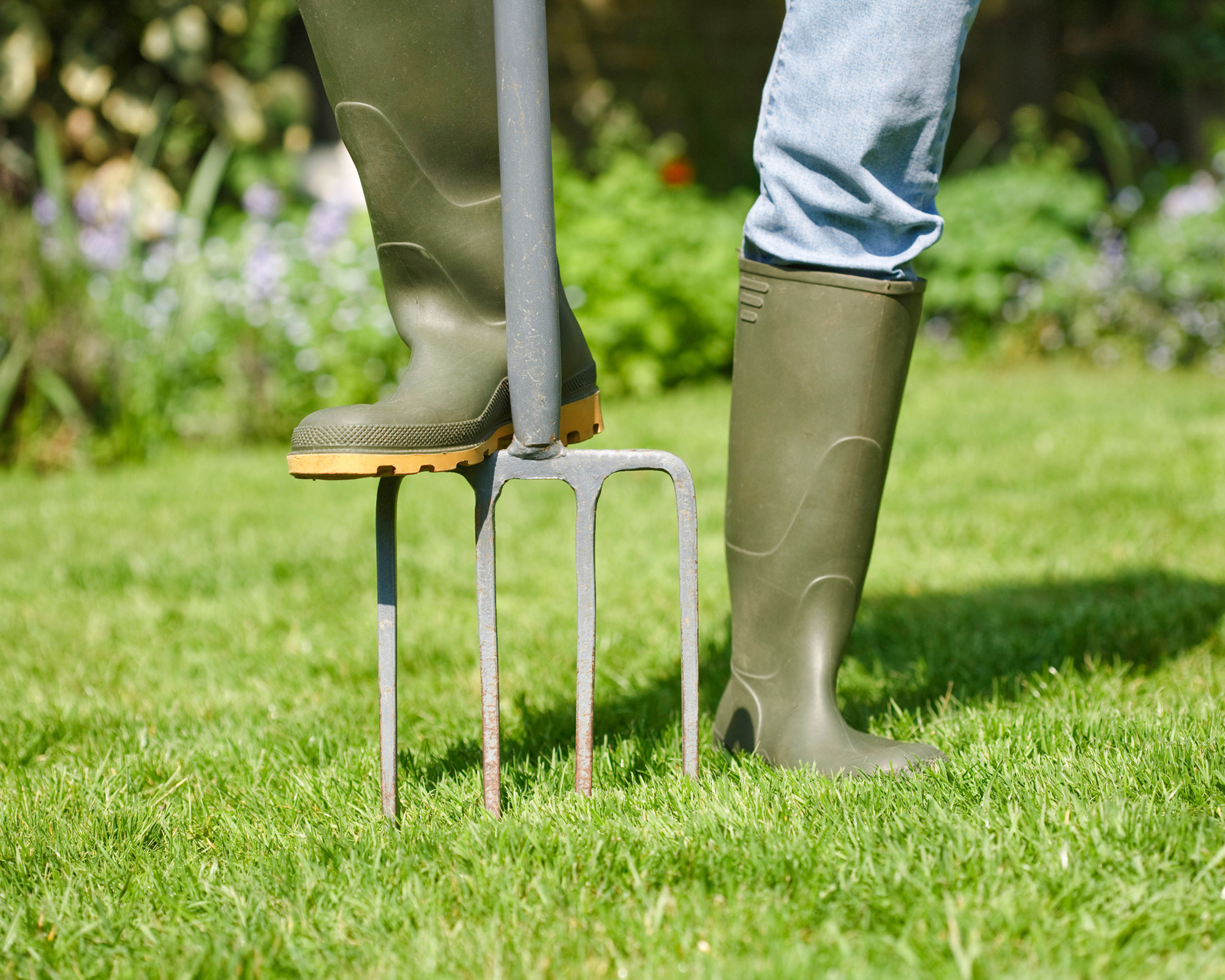
- If you've also got problem areas on your lawn, our expert guide explains how to repair lawn patches with seed.
Step 4: Work sand into the holes
Once you’ve made holes in the lawn, use a stiff brush to work sand into them, Monty Don advises.
Sand will fill the holes and using it after aeration improves drainage and is good for clay soil or if your lawn is inclined to get waterlogged. Use masonry sand so there’s no debris in it.
For normal or light sandy soil, you can use ready mixed top dressing. The latter can also be used to correct bumps in the lawn’s surface.
Step 5: Follow by scarifying
There’s an additional step to the process of how to aerate a lawn. Monty Don recommends learning how to scarify a lawn after aerating.
The purpose of this step is to remove the thatch and moss. A layer of this that’s more than three-eighths of an inch (1cm) thick can prevent water and fertilizer reaching the roots of the grass.
Monty Don’s tip for scarifying? Use a wire rake. But if your lawn is large and that’s just not feasible, you can buy powered scarifier and dethatchers.
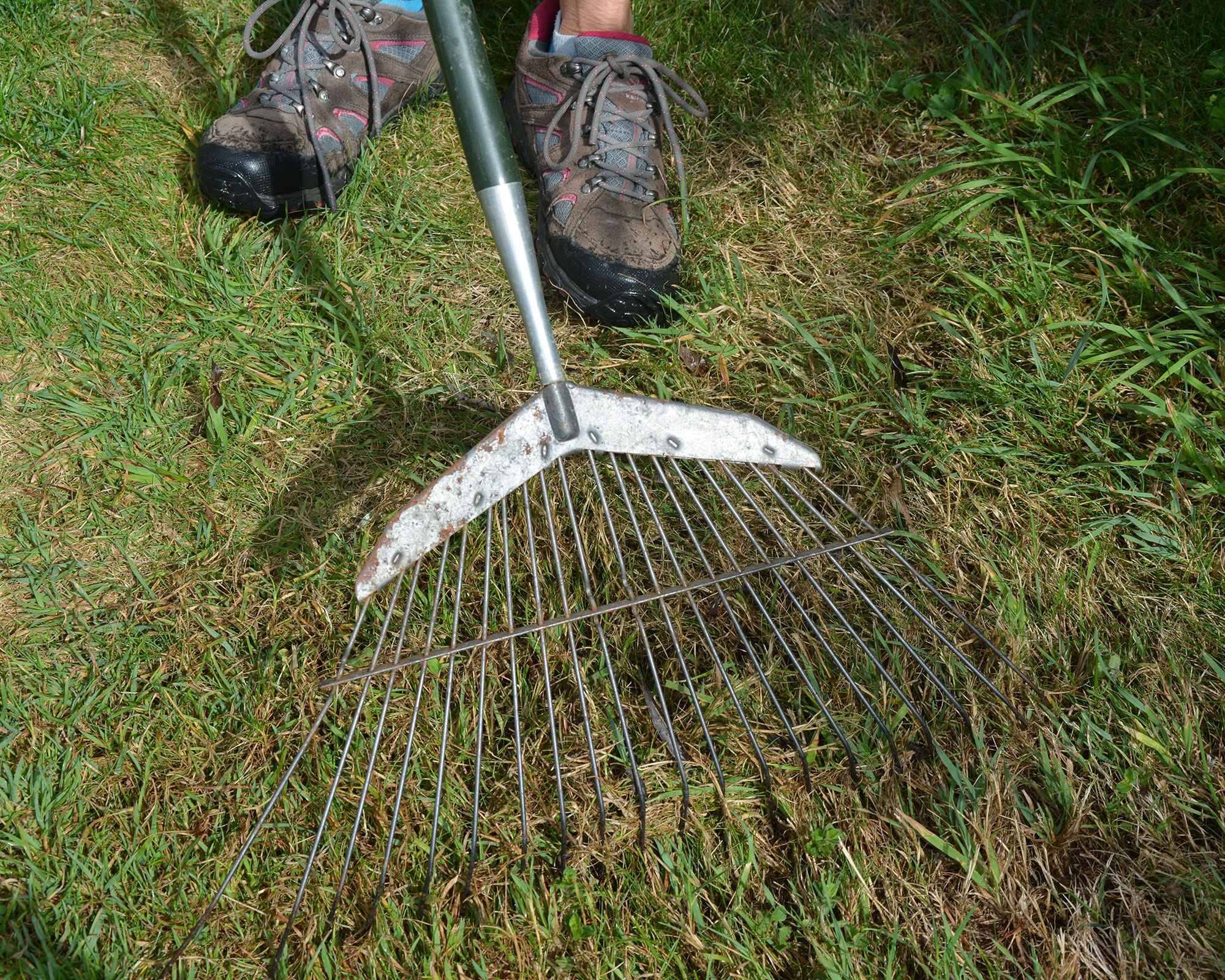
Don’t worry too much about the appearance of your lawn ideas after these steps. Monty Don says your lawn will look a little threadbare but will be rejuvenated next spring.

Sarah is a freelance journalist and editor writing for websites, national newspapers, and magazines. She’s spent most of her journalistic career specialising in homes and gardens and loves investigating the benefits, costs and practicalities of home improvement. It's no big surprise that she likes to put what she writes about into practice, and is a serial house revamper.
